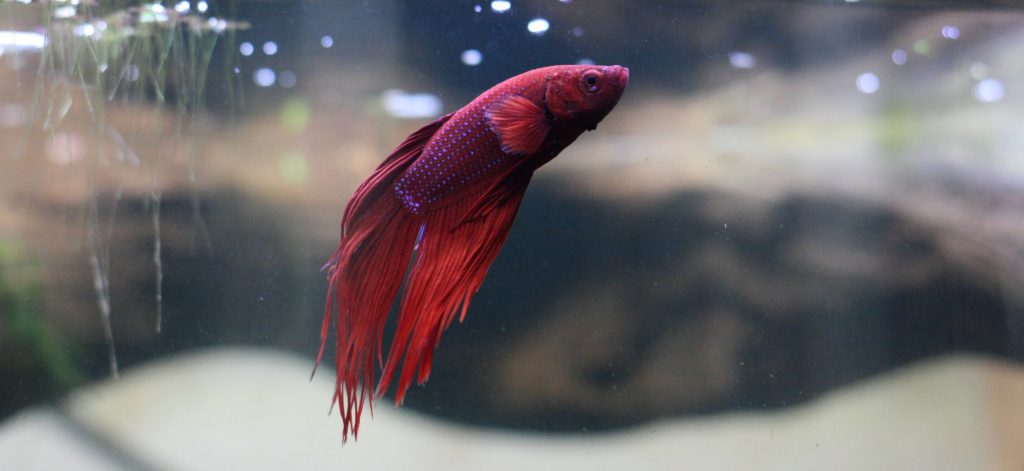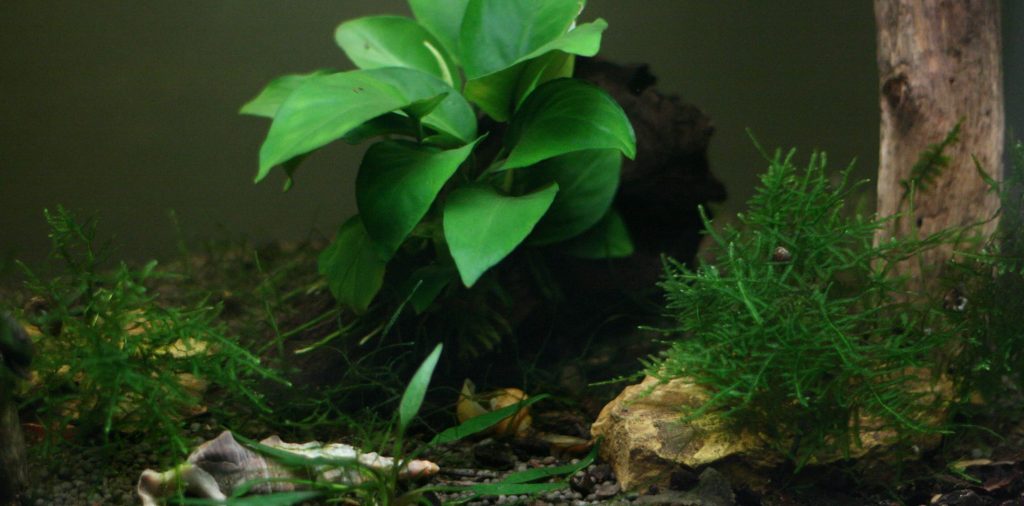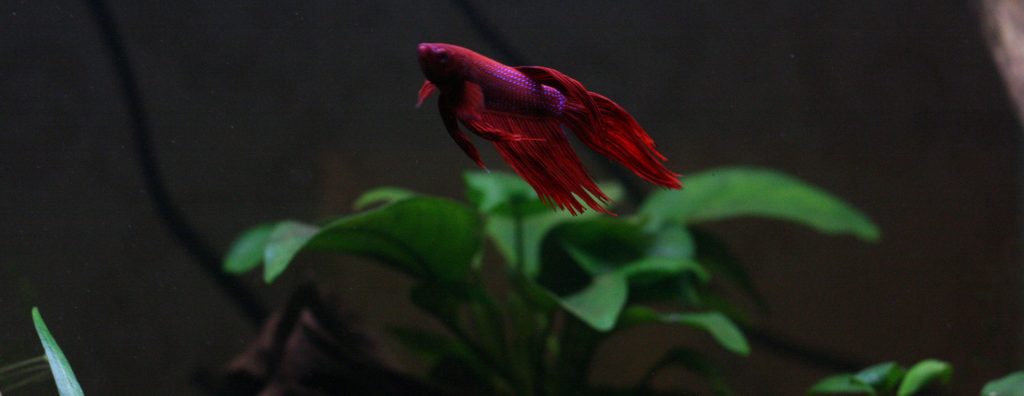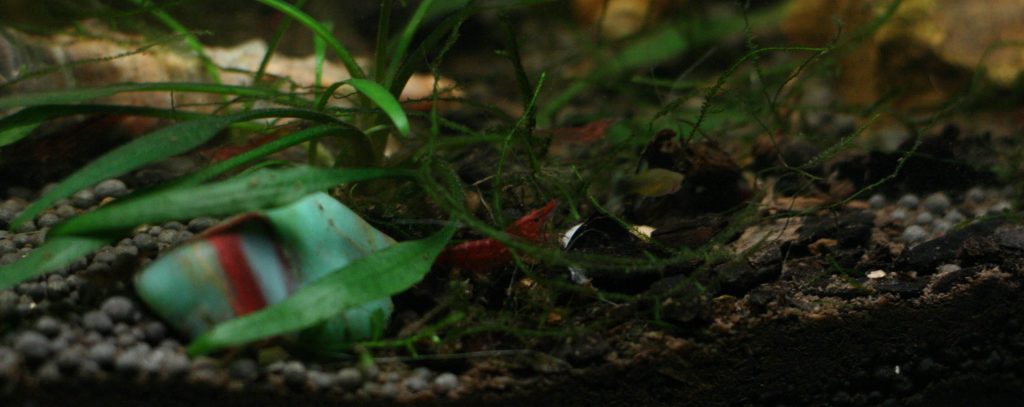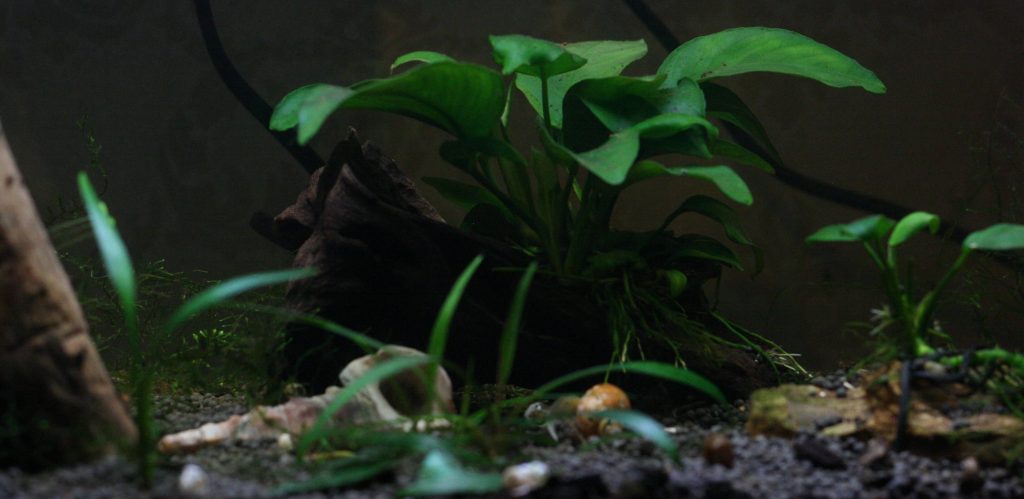Bettas are a fish that many beginners often first start with, but fail with due to the misinformation and misguidance they receive. Bettas are the dogs of the fish world. Attentive, curious, engaging and one of the most beautiful and colourful freshwater fish the hobby has yet to offer. And not to forget, one of the hardiest as well. This Betta Fish Care Guide will tell you all you need to know.
Betta Fish (Betta splendens), or more commonly known as Siamese Fighting Fish are one of the easiest pets to take care of and own. They are low cost, easy to maintain and need very little effort to keep happy and healthy.
With a little know how, and upfront costs. You are likely to have a long-term companion. One who doesn’t make noise, or ask for too much. Just warm, clean water, an interesting space to explore and good quality food.
The common Betta/Fighting Fish that you see in stores are the Betta Splendens. These are tropical fish found in the warm waters of south eastern Asia, They’ve been bred for generations to look the way they do. In the wild you will find them in rice paddies, swamps and other slow moving bodies of water. With plenty of live food and hiding places to explore. The ones for sale are often the males, they’re territorial and will fight each other. The females less so, and can be kept together.
How Long Do Betta Fish Live?
Given the right conditions and care, these pets can live up-to 5 years and have lived even longer in captivity. So take this into consideration before making the purchase. Fish in general have a very high mortality rate, which is why they reproduce so many offsprings. However, majority of the time you will be sold a grown fighting fish that has passed this high risk stage in their lifespan. Female fighting fish however, are more commonly sold at a young age.
How to Care for a Betta Fish
The Basics of understanding the requirements of these fish, is simple. They’re carnivorous, meaning they live off insects and larva in the wild. Much of their time is spent hunting for high protein foods. And they’re a labyrinth fish, which means that they have the ability to absorb oxygen from air.
This is why they can survive in low oxygen environments such as swamps and paddies. Low water movement + warm water = low oxygen. And the reason why they don’t need water filters.. They prefer to come to the surface, to take a breath and aren’t strong swimmers.
There is a myth of them living in dirty water, this is not true.
They live in low oxygen water.
Tank Requirements
It is important to keep in mind that when keeping fish, you are required to create a living ecosystem. Your fish and its survival are secondary to the health and existence of this aquatic ecosystem. Many in the hobby often forget this important element. So remember, ecosystem > the fish.
Tank Size:
5 Gallons (19 Litres) is the recommend tank size. But, you can go as low as 2.5 Gallons (10 Litres) if you provide them with their other needs.
Temperature:
The ideal temperature should remain between 75° and 80° F (24° and 26.5 C), so you will need a heater and a thermometer (for beginners). Keeping a Betta below 74° for long periods of time will cause a drop in their immune system. Making them more prone to fungal infections, bacteria growths and other health problems.
Light:
Lighting is a complicated area, because there are so many options and ways to create it. You can place your tank/bowl in a place where it gets partial sunlight (never direct), and if you have the correct plants, that will be fine. Or you can buy specific lights that will do the job too.
I would recommend beginning with a tank that has built in lighting system like the AquaOne 380 or Fluval Spec (19L). Especially if you’re new to fish keeping and haven’t gotten a natural instinct for things yet. But as long as your plants are growing and surviving in the light that they are being provided with, then all is well. And your Betta fish will be fine.
Plants:
Given that you will not have a filter, when keeping a Betta. Plants become crucial. Not only do they provide foliage and places to hide and explore. They are natures filtration and add a great deal of visual appeal and natural ease to your tank. Many in the hobby recommend artificial plants, I am not one of them. I will provide you with a list of low maintenance/low-light plants that will be perfect for you.
PH:
The preferred water pH range is 6.5-7.5. They prefer soft water, so keeping a piece of driftwood and plants will help achieve this effect. Have your source of water tested to get an idea of your tap water conditions before using it. Certain water sources may be unsafe, in which case you would have to buy filtered water or use rain water.
Substrate & Ornaments:
Keep your gravel type natural and fine. Forget the colourful ones. The depth will depend on the plant types you choose to keep. 1 1/2 inch (4-5cm) is often enough for most cases. Substrate types like shrimp gravel are one of my current favorites due to the dark colour and the ease for bedding rooting plants.
Keep your ornaments natural and make sure they don’t have sharp edges. Driftwood and broken branches and smooth surfaced rocks such as large pebbles make great ornaments to add appeal and an interesting environment for you fish. Again, keep things natural.
Extra Items:
In addition to the things mentioned above. If you’re using artificial light, then using a timer is a must. Saves you the hassle of turning the lights on and off and provides consistency for your tank that both the plants and the Betta will benefit from. Purchase a water conditioner such as Prime to remove chlorine and harmful chemicals from your tap water before placing it in the tank.
How to Care for a Betta Fish in a Bowl
Firstly the bowl has to be big, 5 gallons (19 Litres) being the minimum. With the shape of the bowls you need a bit more space for the fish. Though I would still recommend a tank over a bowl. Especially if you’re a beginner.
The requirements aren’t that different from taking care of them in a tank. Make sure it’s planted. Use some substrate to create an area for good bacteria to grow and for your plants to root in. The only difference comes down to heating and lighting.
You can use heater pads to keep the bowl warm or a small heater. Relying on room temperature isn’t recommended, so some form of heating is a must. If you’re clever you could also use your light source to generate heat for the tank, but that requires some research and ingenuity on your behalf.
For lighting, a small table lamp or desk lamp will do the trick. make sure the spectrum is on the warmer side, which mimics the natural light of the sun.
How to Feed Betta Fish
Betta fish being carnivorous means that you need to provide them with high protein foods. Floating 1mm pellets are the go to source of food for them. If you’re comfortable, feed them moths and other soft shelled insects around the house. Dead ones are fine. They need their diets supplemented with their actual foods for the best health. The alternative is to feed them bloodworms and brine shrimp, that can be purchased from your local aquarium shop.
However, in the wild they’re eating small insects and larvae. So that’s the recommended route to go. They’re even capable of jumping short distances from the water surface to catch their prey.
Many recommend daily feeding. Yet, I am against it. Fish don’t constantly eat in the wild, much of their time and energy is spent searching for their food. Feeding them daily takes away this important habit out of their natural behavior.
Feed them every second day with Betta pellets (4-6 should do) and any other time you catch an unlucky insect. Allow them the opportunity to search for their own food, as they would in the wild. Keeps their little minds busy. IF you find that your fish is skinny, give it a second serve of pellets.
How to Keep Betta Fish Happy
Besides placing them somewhere close by where you can interact with them and provide them with a little attention. The simple combination of clean warm water, regular water changes, plants and interesting objects for them to swim around + quality sources of food. Is enough to keep them happy and healthy long-term.
Bettas are a centerpiece fish, meaning that your tank setup should priorities their needs first. Any additional fish/tank mates should be secondary to your Betta. This will make sure that your fish will be happy and stress free in their home.
How to Tell if a Betta Fish is Happy
Physical signs of health are full fins and bright colours. But the happiest Bettas are also active, engaged by you and spend most of their time searching (hunting) for their food and exploring their environment. These are the signs of great health.
The signs of poor health are: shortening of the fins (translucency). Inactivity and lethargic behavior. Lose of apatite. Lack of territorial displays and cloudy eyes. Much like humans.
How to Keep Betta Fish Warm Without a Heater
I’ve never actually attempted to do this. And I’ve mastered the art of fish keeping and making an aquatic freshwater ecology. The only two methods that come to mind are by keeping them in a warm room that has a consistent temperature (unlikely). Or if you live close to the equator where the temperature is tropical and warm. I had often seen the Thai people keeping guppies in small little water pools and ponds outside of their homes. This same method can be applied to the Betta.
The other options is to use the artificial lighting that you keep the plants living and thriving with, to make the water warm. This of course still means that the light source has to generate enough heat to bring the water to the desired temp and you must work out a method of retaining that heat when the lights are turned off. Easier said that done. The best thing to do is still to buy some kind of small heating device.
Consider purchasing a Paradise Fish instead. Which have similar requirements and behaviors, yet live in cooler waters of East Asia.
Best Betta Fish Tankmates
There are a number of different options when it comes to tankmates for your Betta. One group that I never understood though, was the tetra. Even though these fish technically “fit” into smaller tanks and spaces. They’re a schooling fish and their natural behavior and mannerism only really displays itself in large tanks with open swimming space. Besides that you have many potential tankmates to choose from.
– Mystery snails
– Trumpet snails
– Ramhorn snails
– Ghost Shrimps
– Large Cherry Shrimps
– Common Platy
– Honey Gourami
– Oto Catfish
– Bristlenose Catfish
– Bronze or Albino Cory
– Pygmy Cory
– Kuhli Loach
Some are more suitable than others depending on the tank sizes. For example the bristlenose and bronze cory require a decent amount of room, where bigger tanks than 10 gallon are ideal. Fish such as the pygmy cory, platy, honey gouramis and oto catfish will be more content in a smaller space, given that it’s well planted and has plenty of cover and surfaces.
I personally find that snails and shrimp to be a must in any aquatic environment that allows it. They do a great job of cleaning up the tank and make excellent bottom feeding tank mates.. Though for shrimps, size does matter, because the Betta will attempt to eat the smaller ones. So buy them big and make sure there is plenty of room to hide.
With fish like kuhli loaches, though they will never harm your Betta. They will eat all you snails. So be careful what you buy and mix. Always keep in mind the biological load. The ecosystem must be able to handle the amount of waste your fish and invertebrates produce. And this becomes more difficult the smaller the tank is. In the case that the system goes out of control, there will be ammonia spikes, which are dangerous to life or the classic algae blooms.
The most safe fish and invertebrates from experience, especially if you have a smaller system/tank are the trumpet and ramhorn snails. Larger cherry shrimps, oto catfish and the pygmy cory.
Can Bettas and Plecos Live Together?
Yes they can. But, your pleco requires a tank bigger than a 10 gallon for them to reach full size. Even the smaller breeds such as the bristlnose or crown pleco. Additionally plecos are territorial and will sometimes show aggression towards your Betta. This is normally not an issue as long as the pleco isn’t too big.
Best Plants for Betta Fish
These are all slow growing, medium to low light plants. That are easy to cultivate and grow, even by the beginner.
– Java Fern
– Java Moss
– Christmas Moss
– Amazon Sword
– Common Crypts
– Anubias
– Duckweed
– Frogbit
Ideal to have at least two variations. Example Java Fern + Moss and Duckweed or Frogbits for surface cover. These would make the perfect environment for your fish to feel safe, while having plenty of environmental diversity. Another alternative is an Amazon Sword, Crypts and Duckweed for the surface. With the surface plants make sure they never completely cover the entire surface.
Final Notes on Betta Fish Care
To conclude, to successfully your Betta fish healthy for years. You need a healthy ecosystem, that includes living plants, good bacteria growth and the right balance of fish/invertebrates. With regular weekly water changes 10-20%, monthly bi-monthly vacuuming of the gravel. And keeping in, not to overfeeding and keeping the other things into consideration.
It may seem like a lot initially. But just focus on the Betta fish and go from there.
